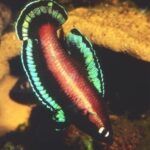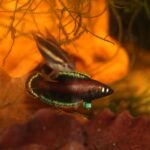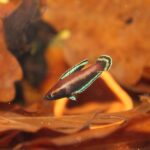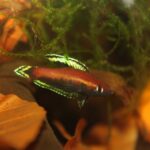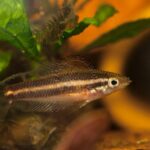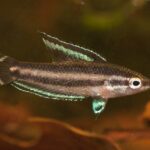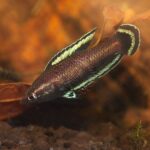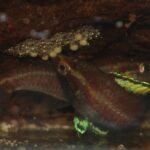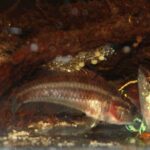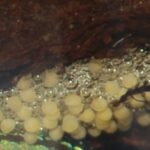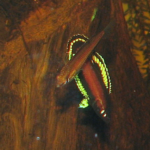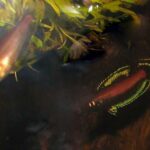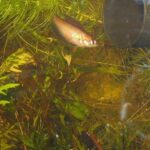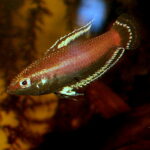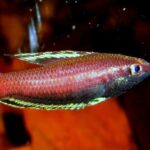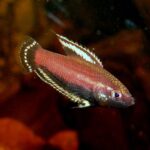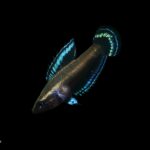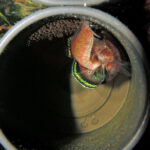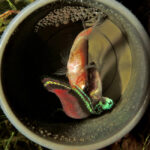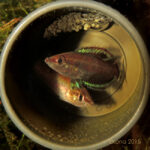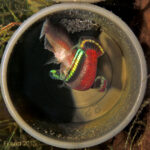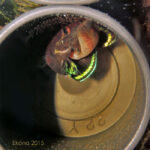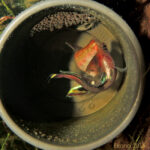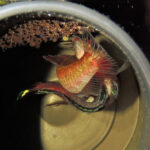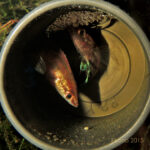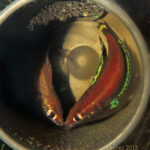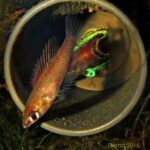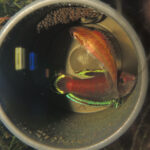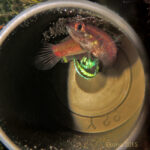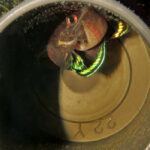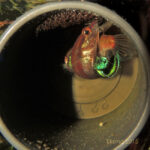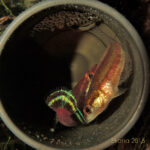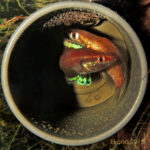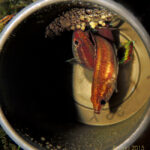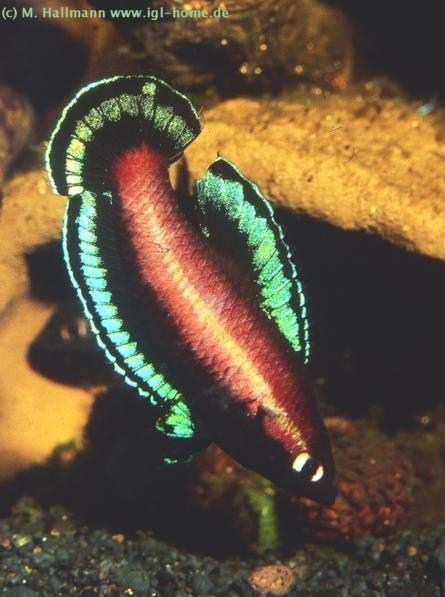
Schaller 1985
First description: Parosphromenus nagyi spec.nov., ein neuer Prachtgurami aus Malaysia (vorläufige Mitteilung). Die Aquarien- und Terrarien-Zeitschrift 38; 301-303.
Characteristics: Overall length max. 4.0 cm. Fin formula: Dorsal: XI-XIII, 5-7, total 16-19, Anal: XI-XIII, 8-11, total 20-23. ♂ nuptial coloration resembles only P.ornaticauda or P.parvulus; the pattern is completely different from other species: a horizontal two-part colouration, below blackish, top dark to golden brown. Also the very short looking caudal, in which the fin rays exceed the fin area by about 1mm of and where the turquoise edge appears further forward, is characteristic of this species.
This feature is therefore less clear for the ♀. Unusually short filaments of the ventral fins, which show a dark spot are also very typical for both sexes. – Two habitat types are known in which the males are easily distinguishable by the eye-catching band in the tail: in the form of terra typica (Form “Kuantan”) this is white, and thus shows a different colour as the blue ribbons in dorsal and anal. In the northern form “Cherating” the band is blue as well. In addition the above-described extension of the tail fin rays is less clear in this form, and therefore the caudal appears to be longer. “Kuantan” males also carry a significant dark spot in the rear part of the dorsal fin.
Similar species: when the males show courtship colours, they cannot be confused with other species. In normal colours males are still distinguishable by their morphologic differences. The risk of confusion is higher for the females, because morphological differences are less significant, but on close observation they are still easily identifiable.
Occurence/Distribution: Ranges of the east coast of Western Malaysia. The species has a relatively large area of distribution; it is found from Pekan in the south going north via Kuantan and Cherating up to the area north of Cukai.
Threat: High. Although the species has a large distribution area, most of the natural habitats have been massively altered by human activities. Nowadays the fish is found mainly in remaining residual habitats and roadside canals that are still fed by remnants of former black water swamps.
Discovery/First import: to Europe by Peter Nagy of Felsö Gör (Salzburg/Austria) in 1979; Schaller named the species after its discoverer (Kuantan-form). Later it has been imported again at several occasions, e.g. to Switzerland in 1985 by Krummenacher. The Cherating-form was imported to Europe for the first time in 2000 by M. Hallmann.
Trade: rarely in trade today; only the Kuantan-form. The aquarium stock depends almost completely on privately imported fish.
Care / Breeding: Similar to other licorice gouramis.
Behaviour / Particularities: Head-down-courtship. Small foam nest. Because of its spectacular nuptial plumage this is a very sought-after, attractive species.
A fantastic photo serie of a Parosphomenus nagyi pair spawning captured by David Jones.


